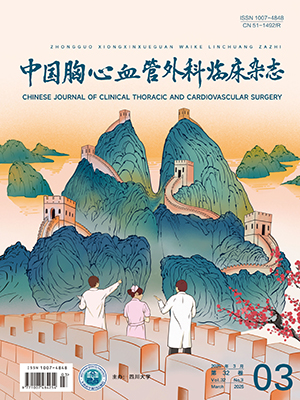| 1. |
Dodd AR, Goodnight JE, Pu LL.Successful management of cervicoesophageal anastomosis leak after microsurgical esophageal Reconstruction:a case report and review of the literature.Ann Plast Surg, 2010, 65 (1):110-114.
|
| 2. |
Briel JA.Risk factors for ischemia.leak, and stricture of esophageal anastomosis:gastric pull-up versus colon interposition.J Am Coll Surg, 2004 (198):536-541.
|
| 3. |
Raymond DP.The esophageal anastomosis:traditional methods to prevent leak.J Gastrointest Surg, 2009, 13 (9):1555-1557.
|
| 4. |
Reavis KM.The esophageal anastomosis:how improving blood supply affects leak rate.J Gastrointest Surg, 2009, 13 (9):1558-1560.
|
| 5. |
Kato S, Masahiko O, Aida K, et al.Clinical usefulness of the percutaneous trans esophageal gastro-tubing (PTEG) for decompression of the bowels and for transintestinal nutrition].J Nippon Med Sch, 2002, 69:386-389.
|
| 6. |
Santos G H.Decompression of the gastrointestinal tract after esophageal operations:how to do it.J Am Coll Surg, 1997, 185 (4):410-411.
|
| 7. |
Lin Cheng-hui, LIU NJ, LEE C S, et al.Nasogastric feeding tube placement in patients with esophageal Cancer:application of ultrathin transnasal endoscopy.Gastrointest Endosc, 2006, 64 (1):104-107.
|
| 8. |
蒋朱明, 吴蔚然.肠内营养, 主编.第2版.北京:人民卫生出版社, 2002.221-230.
|
| 9. |
李小寒, 尚少梅, 主编.饮食与营养.北京:人民卫生出版社, 2006:210.
|
| 10. |
黄冰, 张立军, 刘士凤, 等.改良后的胃管固定方法.中国实用护理杂志, 2007, 23 (35):10.
|
| 11. |
熊玉梅.食管癌术后两种胃管固定方法的应用与比较.现代护理, 2007, 13 (7):635-636.
|
| 12. |
沈莉.改进的胃管及十二指肠营养管的固定方法.中国医药指南, 2012, 10 (31):488-489.
|
| 13. |
张丹梅.食管癌术后胃管两种固定方法的比较.中外健康文摘, 2013, 10 (4):376-376.
|
| 14. |
刘静.食管癌术后胃管意外脱落原因分析及防范对策.中国实用医药, 2012, 7 (12):159-160.
|
| 15. |
Ahmed A, Aggarwal M, Watson E.Esophageal perforation:a complication of nasogastric tube placement.Am J Emerg Med, 1998, 16 (1):64-66.
|
| 16. |
Tai CM, Wang HP, Lee CT, et al.Esophageal obstruction by a tangled nasogastric tube.Gastrointest Endosc, 2010, 72 (5):1057-1058.
|
| 17. |
朱丽萍.食管癌术后胃管营养管的固定方法改进效果比较.山西医药杂志, 2011, 40 (10):1045.
|
| 18. |
鄢海霞.胃肠及鼻肠管固定方法改进的效果分析.齐鲁护理杂志, 2012, 18 (2):8-8.
|




